Nature Exploring Diver Helps You to Explore The Nature! Your Journey Begins! So Let's Start!
Nature Exploring Diver Helps You to Explore The Nature! Your Journey Begins! So Let's Start!
Sunday, October 6, 2019
Animals in Polonnaruwa to be provided with 'drinking water'
A programme was launched in the Polonnaruwa sanctuary on Sunday to provide drinking water to animals that have been affected by the drought.
The Wildlife Department stated that they commenced this programme to safeguard the lives of animals who venture in search of water . The Polonnaruwa sanctuary which spans across 1500 acres is rich in bio diversity and is home to many fauna .
A number of small water sources usually supply these animals with adequate drinking water, however nearly all of these water sources have dried up due to the drought.
According to the Wildlife Department nearly 500 deer and countless troupes of monkeys and Chevrotains live in the area.
Indonesian villagers kill nearly 300 crocodiles in revenge attack
REUTERS – Indonesian villagers armed with knives, hammers, and clubs
slaughtered 292 crocodiles in revenge for the death of a man killed by a
crocodile at a breeding farm, an official said on Saturday (July 14).
Video showed bloodied carcasses of the crocodiles in a large pile in the Sorong district of the eastern Indonesian province of West Papua.
The head of Indonesia’s Natural Resources Conservation Agency in West Papua said that the 48-year-old victim had entered the crocodile farm and was likely picking grass for animal feed when he was attacked. After the burial of the man on Saturday, villagers entered the farm and killed all the crocodiles, authorities said.
Authorities said the farm had been given a license to breed protected saltwater and New Guinea crocodiles in 2013 for preservation and also to harvest some of the animals. But one of the conditions was that the reptiles did not disturb the community, they said.
Video showed bloodied carcasses of the crocodiles in a large pile in the Sorong district of the eastern Indonesian province of West Papua.
The head of Indonesia’s Natural Resources Conservation Agency in West Papua said that the 48-year-old victim had entered the crocodile farm and was likely picking grass for animal feed when he was attacked. After the burial of the man on Saturday, villagers entered the farm and killed all the crocodiles, authorities said.
Authorities said the farm had been given a license to breed protected saltwater and New Guinea crocodiles in 2013 for preservation and also to harvest some of the animals. But one of the conditions was that the reptiles did not disturb the community, they said.
Georgia capital hit by floods : zoo animals escape
Georgia was hit by heavy floods and rainfall in the capital of Tbilisi.
At least five people are dead and several missing according reports.
Various animals were found missing from the city’s zoo. A hippopotamus was seen wandering the streets as well a bear believed to have escaped from the zoo was spotted clinging to a building to avoid the water below.
Other animals like tigers, lions and wolves are believed to have escaped from their damaged cages. Some animals have been captured or killed, but many are still on the loose.
At least five people are dead and several missing according reports.
Various animals were found missing from the city’s zoo. A hippopotamus was seen wandering the streets as well a bear believed to have escaped from the zoo was spotted clinging to a building to avoid the water below.
Other animals like tigers, lions and wolves are believed to have escaped from their damaged cages. Some animals have been captured or killed, but many are still on the loose.
‘Oldest ever eye’ discovered in fossil
An “exceptional” 530-million-year-old fossil contains what could be the oldest eye ever discovered, according to scientists.
The remains of the extinct sea creature includes the early form of an eye, which is seen in many animals that exist today, including bees and dragonflies.
Scientists found the ancient creature while looking at the well-preserved trilobite fossil.
Trilobites are hard-shelled ancestors of crabs and spiders, who lived in coastal waters during the Palaeozoic era between 541-251 million years ago.
Saturday, October 5, 2019
Thursday, October 3, 2019
"A Black Tiger" Found in Sri Lanka
“The confusion arises due to the Sinhala terms for the leopard and tiger.
“Leopard is diviya in Sinhala but is also called kotiya by the villagers. In fact the name of the subspecies is Panthera pardus kotiya.
“Tiger is viagra in Sinhala. However the tiger is also referred to as kotiya by some.
“Hence the confusion when translating kotiya into English.
“There are no indigenous tigers (4-legged) in SrI Lanka. The animal in question is a black leopard – a very rare melanistic version of the same old Panthera pardus kotiya!”
++++Previously noted in 2009:
It was reported by local media on March 7, 2009, that the carcass of a female “black tiger” was found in southern Sri Lanka on Friday, March 6, 2009.
The Daily Mirror (source of the photos) said the carcass of a “black tigress” was found after it got caught in a poacher’s snare in Deniyaya, around 125 miles (about 201 km) southeastern of the capital Colombo.
The newspaper quoted the Wild Life Department as saying that the black tiger’s length from head to tail is 3 ft 7.5 inches (1.1 meters), the height is 2 feet (0.61 meter) and the tail alone had measured up to 2 feet 4 inches (over 0.71 meter).
From a distance, its color is jet black and when inspected from a closer distance, spots are vaguely visible, the newspaper said.
“From a distance, its colour is jet black and when inspected from a closer distance, spots are vaguely visible,” Wadawalawa “Athathun Sevana” Vet Dr. Kumudini said. According to her, the “tigress” had not fully grown yet however because of the rarity of the species the exact age cannot be determined. (If “spots” are being seen, then why isn’t this a melanistic leopard? Is there some mistranslation here? The photographs have embedded labels of “Black panther.”- Loren.)
Dr. Kumudini also said that the “black tigress” showed signs that are common to the “Panthara Pardus Kotiya” (i.e. Panthera pardus kotiya, the Sri Lankan leopard) species. According to Dr. Kumudini there had been a similar discovery of a “black tiger” from the Kalavana area some years ago, yet the carcass had been too decomposed to gain proper identification.
She claimed that further investigations are necessary to determine whether the creature isa subspecies or a non-agouti mutation of the “Panthara Pardus Kotiya species” [sic].
The newspaper quoted an expert as saying that the “tiger” had not fully grown yet however “because of the rarity of the species the exact age cannot be determined.”
The “black tigers” are “very rarely species [sic] in Sri Lanka,” according to the Xinhua News Services. Experts said there had been a few sightings of “black tigers” from the Kalavana, Horton Plains and Sripada areas.
This seems clearly to be a black Sri Lankan leopard.
+ + +
Cryptozoologically, melanistic felids and black tigers are of interest. In 2007, camera trap photos were taken of an alleged black mother tiger and her two offspring in India. (See more, here.)
I wrote articles on melanistic felids, including black tigers which were published, some in the zoo literature, in the 1970s, and Karl Shuker nicely summarized old reports of black tigers and other black cats in his 1989 book, Mystery Cats of the World. Wikipedia has an easily accessible article detailing the long history of melanistic and black tiger reports and evidence, here.
While reports of such tigers in India and South Asia are often referred to as “black tigers,” reports of similarly-colored tigers in China frequently are termed “blue tigers,” or more rarely, “Maltese tigers.”
Needless to say, “black tigers” are not separate species or subspecies that have a different maturity rate of development than normal color phase tigers, despite what is being noted by the Asian media on the Sri Lankan report (which seems to be a black panther, a black leopard, not a tiger).
Photos of alleged black tigers are known, from the recent past.
“Leopard is diviya in Sinhala but is also called kotiya by the villagers. In fact the name of the subspecies is Panthera pardus kotiya.
“Tiger is viagra in Sinhala. However the tiger is also referred to as kotiya by some.
“Hence the confusion when translating kotiya into English.
“There are no indigenous tigers (4-legged) in SrI Lanka. The animal in question is a black leopard – a very rare melanistic version of the same old Panthera pardus kotiya!”
++++Previously noted in 2009:
It was reported by local media on March 7, 2009, that the carcass of a female “black tiger” was found in southern Sri Lanka on Friday, March 6, 2009.
The Daily Mirror (source of the photos) said the carcass of a “black tigress” was found after it got caught in a poacher’s snare in Deniyaya, around 125 miles (about 201 km) southeastern of the capital Colombo.
The newspaper quoted the Wild Life Department as saying that the black tiger’s length from head to tail is 3 ft 7.5 inches (1.1 meters), the height is 2 feet (0.61 meter) and the tail alone had measured up to 2 feet 4 inches (over 0.71 meter).
From a distance, its color is jet black and when inspected from a closer distance, spots are vaguely visible, the newspaper said.
“From a distance, its colour is jet black and when inspected from a closer distance, spots are vaguely visible,” Wadawalawa “Athathun Sevana” Vet Dr. Kumudini said. According to her, the “tigress” had not fully grown yet however because of the rarity of the species the exact age cannot be determined. (If “spots” are being seen, then why isn’t this a melanistic leopard? Is there some mistranslation here? The photographs have embedded labels of “Black panther.”- Loren.)
Dr. Kumudini also said that the “black tigress” showed signs that are common to the “Panthara Pardus Kotiya” (i.e. Panthera pardus kotiya, the Sri Lankan leopard) species. According to Dr. Kumudini there had been a similar discovery of a “black tiger” from the Kalavana area some years ago, yet the carcass had been too decomposed to gain proper identification.
She claimed that further investigations are necessary to determine whether the creature isa subspecies or a non-agouti mutation of the “Panthara Pardus Kotiya species” [sic].
The newspaper quoted an expert as saying that the “tiger” had not fully grown yet however “because of the rarity of the species the exact age cannot be determined.”
The “black tigers” are “very rarely species [sic] in Sri Lanka,” according to the Xinhua News Services. Experts said there had been a few sightings of “black tigers” from the Kalavana, Horton Plains and Sripada areas.
This seems clearly to be a black Sri Lankan leopard.
+ + +
Cryptozoologically, melanistic felids and black tigers are of interest. In 2007, camera trap photos were taken of an alleged black mother tiger and her two offspring in India. (See more, here.)
I wrote articles on melanistic felids, including black tigers which were published, some in the zoo literature, in the 1970s, and Karl Shuker nicely summarized old reports of black tigers and other black cats in his 1989 book, Mystery Cats of the World. Wikipedia has an easily accessible article detailing the long history of melanistic and black tiger reports and evidence, here.
While reports of such tigers in India and South Asia are often referred to as “black tigers,” reports of similarly-colored tigers in China frequently are termed “blue tigers,” or more rarely, “Maltese tigers.”
Needless to say, “black tigers” are not separate species or subspecies that have a different maturity rate of development than normal color phase tigers, despite what is being noted by the Asian media on the Sri Lankan report (which seems to be a black panther, a black leopard, not a tiger).
Photos of alleged black tigers are known, from the recent past.
Dankutu Dankutu: The Making Of The Traditional Drum
Music ran through his veins. This we were sure of as he
played on the dolkiya (drum) that he and his fellow artisans had
completed making. The exuding sound was a reflection of a pure bred and
deeply grounded village craftsmanship and livelihood, in the little,
almost hidden township within kuragala.
Words Sonali Kadurugamuwa Photographs Menaka Aravinda and Rumesh Perera
Caught Up In The Drill
Being engaged was everyone’s business. The entire little village, in fact, had a participation in this drum making soirée. The day was hot but under the shade of their makeshift working stalls, the artisans were on a roll… Hardly did we see any type of modern science or technology aiding this quiet, busy lifestyle – it was just another manic Monday for these folk and a good old social network of experienced heads and hands, from an age-old ancestral tradition, was everything that was essential in getting the job done.
Kos (Jak) wood, cut into short stumps, and axed into vague drum or bera (drums) figures was the begin-with base. Many other types of wood are also used in drum making such as ehela, kohomba (neem), coconut and milla. However, as the artisans explain, they make use of the wood most abundant in and around their vicinity.
It was just another manic monday for these folk and a good old social network of experienced heads and hands, from an age-old ancestral tradition, was everything that was essential in getting the job done.
A leewaraya or a manual pulley, with a giant wheel at one end, made the rotations along a rope cable possible, which in turn served the carver at the other end with a great productive mechanism to chisel away the spinning stump into a thammattama shape. Not much talking went alongside work mind you, which is usually quite unfamiliar in a Sri Lankan working environment, as any local would assure you, in our society; we are always up for more than a little chit chat. Nonetheless, we presumed that this silent spell may have been a vital ingredient in the intricacy and precision crucial for people in this profession.
From One Hand To The Other, Go The Bera Barrels
Drum making duties begin with the cutters and the carvers, and then it’s over to the shavers and scrapers, who sand paper the outer layer of wood to smooth out any remaining splints… the scrapers then scoop out the insides of the shaped wood to form hollow cavities and leave the unfinished bera out to dry. Meanwhile up the village trail, the polishers apply a varnish to protect the dry wood and also to bring out its natural colour. Goat and cattle hide lay stretched, drying in the sun and once completely parched, they are meticulously cut into circles to form coverings for the hollows in the bera and then stripped as binders to hold the lids in place, while more dried skins are slit laterally as streamers that will run the length of taller drums. Thereafter, the grinder, with a mortar pestle grinds up a black porous rock, and pastes the granules to make up the small centre circle on the flat hide coverings or faces, on either side of the bera.
Did You Know?
Going Deeper Into Tradition…
Even the generations before, the artisans’ great grandfathers were drum-makers and it was plain to see down to this day, where all the hardwork had penetrated into. The final skill was presented to us by craftsmen who consulted the finishing touches to the bera by drumming them to elucidate their power and diversity of sound. Each drum spoke a different beat and each beat was for a different cause, for weddings and festive celebrations alike, for ritualistic dances, some for holy ceremonies, performing instrumental music and of course, my personal favourites… as party starters. Even historical chronicles, like the Mahavamsa accounts the use of drums in numerous occasions dating as far back as 2,500 years. All in all they were and still are a custom of melodious communication embedded in cultural roots.
In vibrant yet neutral colours, the many drums dressed in the skilful efforts of their creators, await their long journey to upmarket shops, mainly in the commercial capital of Colombo, where their worth pays off. Uda Rata (up country) bera, Pahatha Rata (southern coastal regions) bera, Yak bera, Geta bera or Dandu bera, the drum line is simple… step to the beat! With nearly 40 varieties of bera, most of which were being made in this village and other similar communities, the beat truly does flow through the veins of the island paradise.
Words Sonali Kadurugamuwa Photographs Menaka Aravinda and Rumesh Perera
Caught Up In The Drill
Being engaged was everyone’s business. The entire little village, in fact, had a participation in this drum making soirée. The day was hot but under the shade of their makeshift working stalls, the artisans were on a roll… Hardly did we see any type of modern science or technology aiding this quiet, busy lifestyle – it was just another manic Monday for these folk and a good old social network of experienced heads and hands, from an age-old ancestral tradition, was everything that was essential in getting the job done.
Kos (Jak) wood, cut into short stumps, and axed into vague drum or bera (drums) figures was the begin-with base. Many other types of wood are also used in drum making such as ehela, kohomba (neem), coconut and milla. However, as the artisans explain, they make use of the wood most abundant in and around their vicinity.
It was just another manic monday for these folk and a good old social network of experienced heads and hands, from an age-old ancestral tradition, was everything that was essential in getting the job done.
A leewaraya or a manual pulley, with a giant wheel at one end, made the rotations along a rope cable possible, which in turn served the carver at the other end with a great productive mechanism to chisel away the spinning stump into a thammattama shape. Not much talking went alongside work mind you, which is usually quite unfamiliar in a Sri Lankan working environment, as any local would assure you, in our society; we are always up for more than a little chit chat. Nonetheless, we presumed that this silent spell may have been a vital ingredient in the intricacy and precision crucial for people in this profession.
From One Hand To The Other, Go The Bera Barrels
Drum making duties begin with the cutters and the carvers, and then it’s over to the shavers and scrapers, who sand paper the outer layer of wood to smooth out any remaining splints… the scrapers then scoop out the insides of the shaped wood to form hollow cavities and leave the unfinished bera out to dry. Meanwhile up the village trail, the polishers apply a varnish to protect the dry wood and also to bring out its natural colour. Goat and cattle hide lay stretched, drying in the sun and once completely parched, they are meticulously cut into circles to form coverings for the hollows in the bera and then stripped as binders to hold the lids in place, while more dried skins are slit laterally as streamers that will run the length of taller drums. Thereafter, the grinder, with a mortar pestle grinds up a black porous rock, and pastes the granules to make up the small centre circle on the flat hide coverings or faces, on either side of the bera.
Did You Know?
Each side of the same drum coverings can be made with different animal hides to diversify the resonating sound or beat.
Some animal hides come from the monkey and even the monitor lizard.
The karakawana rabana also known as the spinning rabana are a variety of drum that Perahara entertainers spin on swords.
Ornamented clay pots or traditional water carrying jugs are used for drums, during the time of paddy harvesting in villages.
Going Deeper Into Tradition…Even the generations before, the artisans’ great grandfathers were drum-makers and it was plain to see down to this day, where all the hardwork had penetrated into. The final skill was presented to us by craftsmen who consulted the finishing touches to the bera by drumming them to elucidate their power and diversity of sound. Each drum spoke a different beat and each beat was for a different cause, for weddings and festive celebrations alike, for ritualistic dances, some for holy ceremonies, performing instrumental music and of course, my personal favourites… as party starters. Even historical chronicles, like the Mahavamsa accounts the use of drums in numerous occasions dating as far back as 2,500 years. All in all they were and still are a custom of melodious communication embedded in cultural roots.
In vibrant yet neutral colours, the many drums dressed in the skilful efforts of their creators, await their long journey to upmarket shops, mainly in the commercial capital of Colombo, where their worth pays off. Uda Rata (up country) bera, Pahatha Rata (southern coastal regions) bera, Yak bera, Geta bera or Dandu bera, the drum line is simple… step to the beat! With nearly 40 varieties of bera, most of which were being made in this village and other similar communities, the beat truly does flow through the veins of the island paradise.
Subscribe to:
Comments (Atom)










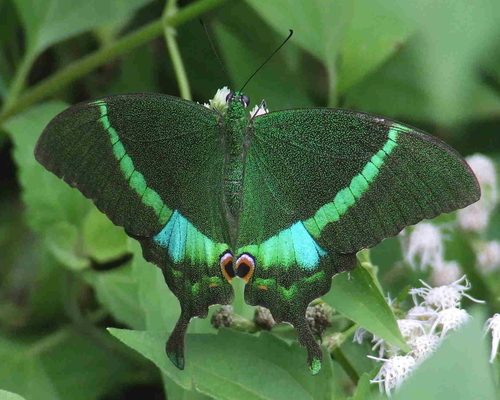

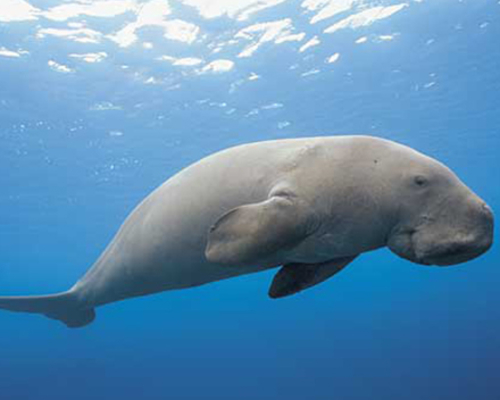
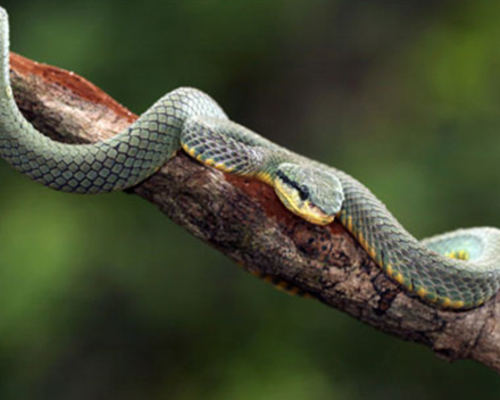
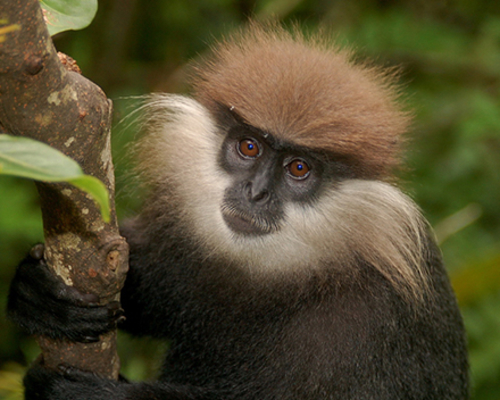
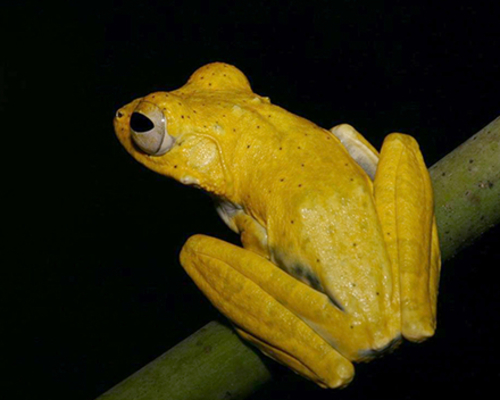
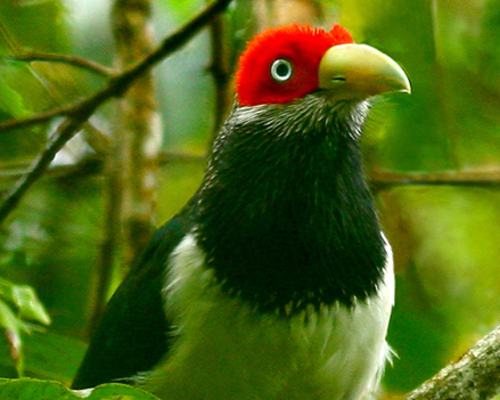
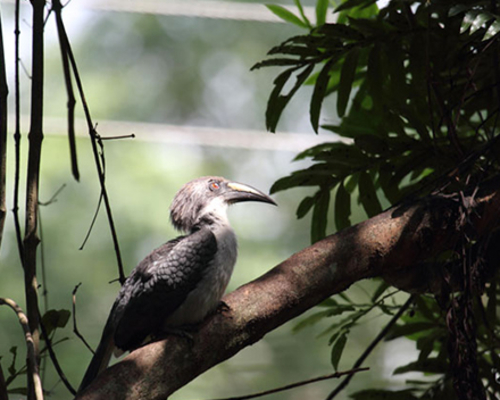
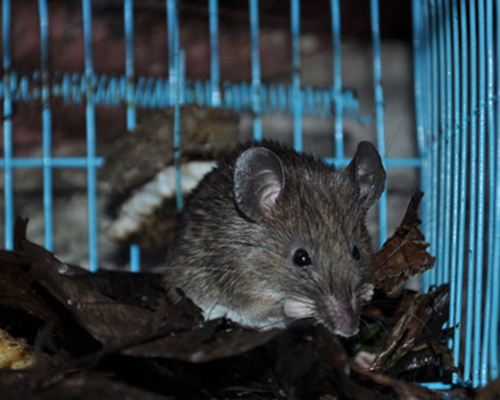
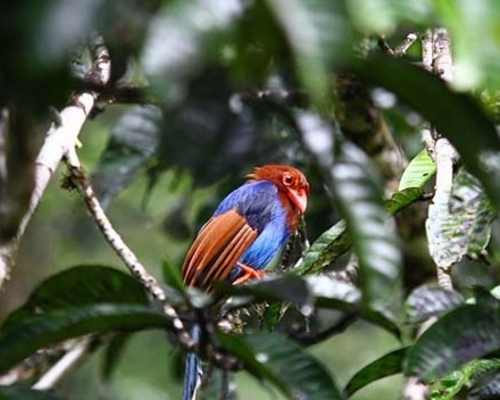
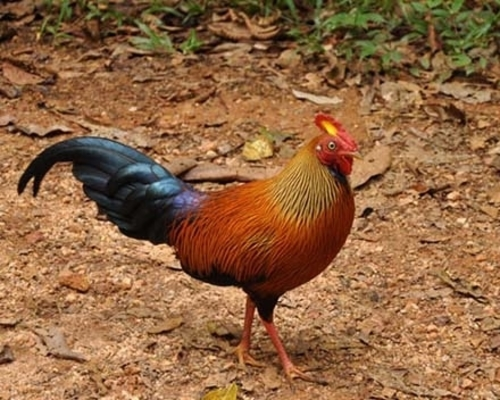
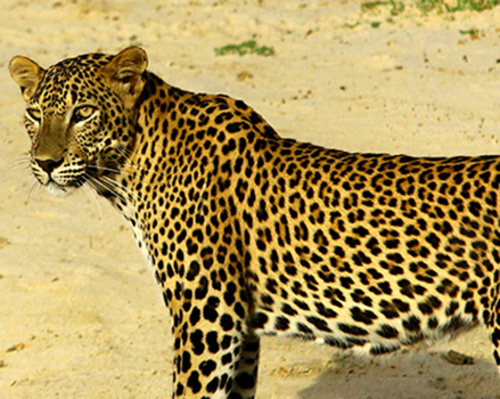













 On 21 July 1993, around 10 a.m., a boy, in self-defense, killed a young
melanistic tigress with a bow and arrows. The incident occurred in the
village of Podagad in the Bhandan river valley west of Similipal Tiger
Reserve, India. The main peculiarity in body coloration was that the
dorsal stripes were tawny and the ventral stripes white on a black
background [or the black stripes were wider than the orange dorsal and
white ventral backgrounds]. The animal was photographed (see photos) and
videotaped.
On 21 July 1993, around 10 a.m., a boy, in self-defense, killed a young
melanistic tigress with a bow and arrows. The incident occurred in the
village of Podagad in the Bhandan river valley west of Similipal Tiger
Reserve, India. The main peculiarity in body coloration was that the
dorsal stripes were tawny and the ventral stripes white on a black
background [or the black stripes were wider than the orange dorsal and
white ventral backgrounds]. The animal was photographed (see photos) and
videotaped.


















